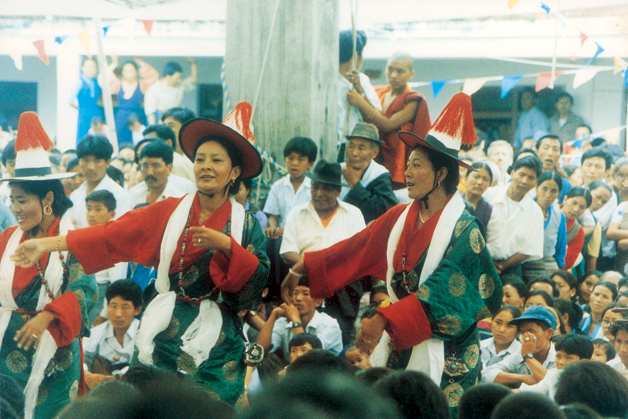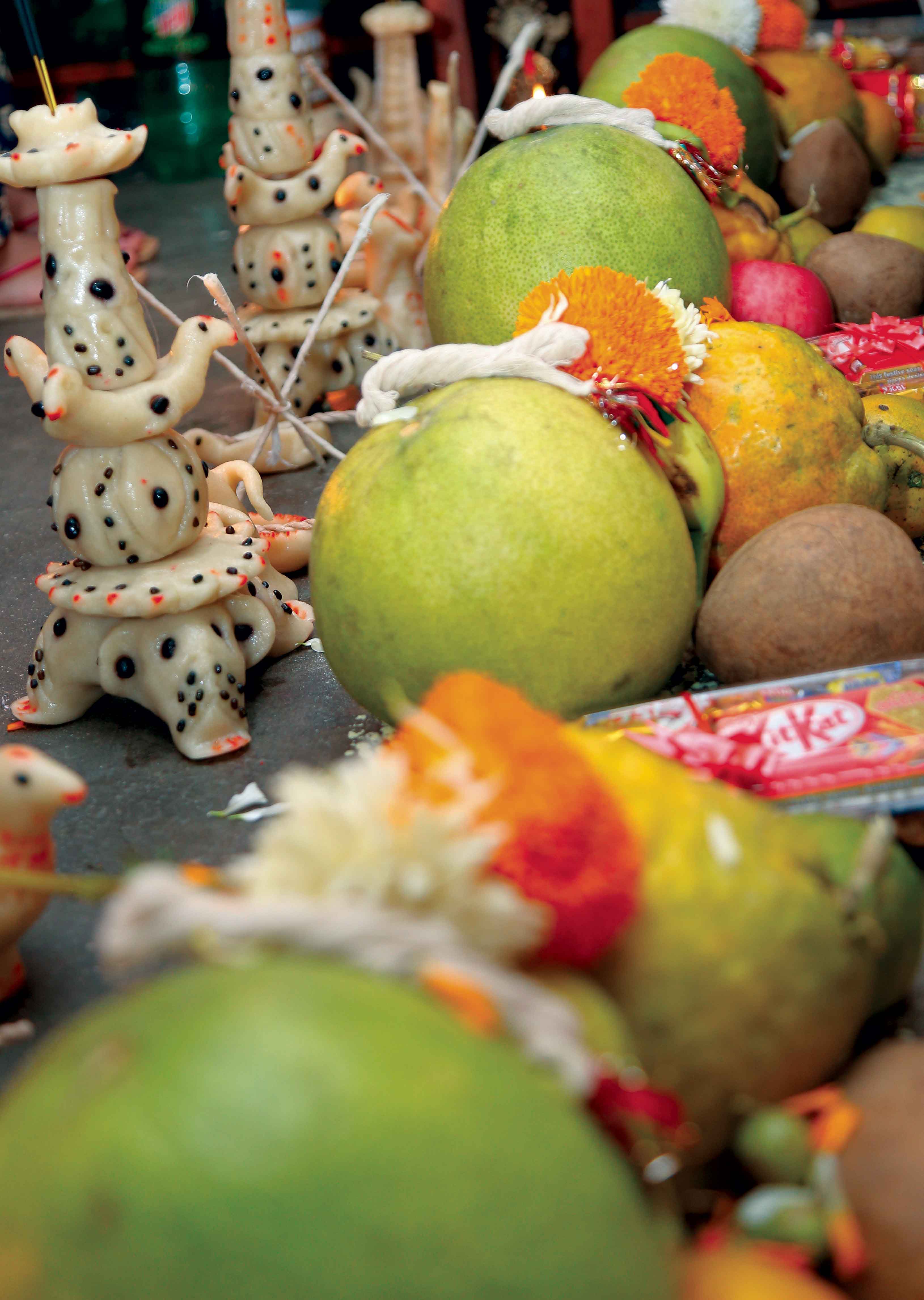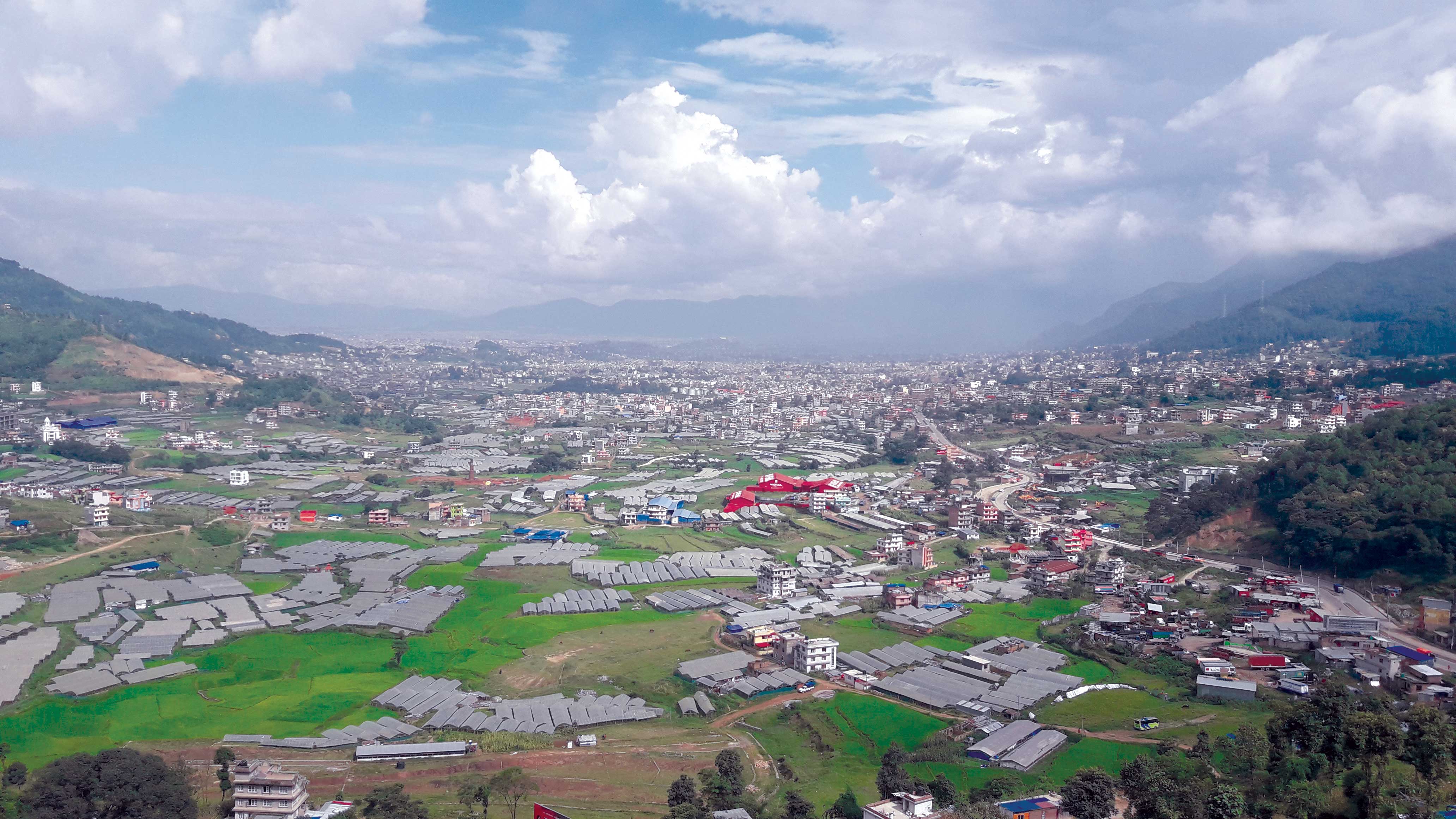
Many different New Years celebrations take place in Nepal during the twelve months that make up a year. Among them, Lhosar can be confusing. Although it originated in Tibet, different Nepali ethnic groups celebrate in different months. The Gurungs and Tamangs have already celebrated while others like the Sherpas and Manangeys as well as the Tibetans celebrate much later. The coming Tibetan New Year falls on 28th February 2006 and ushers in the Year of the Fire Dog. Lhosar is a three-day festival, but feasting goes on for weeks.
Preparations begin well before the arrival of the New Year. Tibetans begin making new clothes and start preparing the special foods needed during the festival. Khapse (flour preparations specially made for Lhosar), Chhyang (rice beer) and Lofi (barley shoots) are some of the food required for the celebrations.
Two days before the ceremonies are to begin, the house is cleaned thoroughly and must be completed before the 29th of the Tibetan calendar month. One of the important preparations is the making of Guthuk, which consists of nine different ingredients including vegetables while barley is the primary ingredient. The dough in the Guthuk is shaped into balls and in some of them, coal and chilly, etc. are added before cooking. Each person in the family then opens the dough to see what his portion contains. This happens on the 29th and is a fun event as contents like coal or chilly in the dough is said to symbolize the person’s character; coal represents an evil person while chilly means the person is hot tempered, etc. On this day, some monasteries feature their traditional Lama dance. Towards the end of the day, an effigy of a demon is made and all the leftover Guthuk is poured on it. It must then be thrown away by someone who takes it to a crossroads nearby. This symbolizes the throwing away of all evil and bad omens. Hence, when the person comes back to the house, he is not let in unless he brings good news.
On the 30th the house is decorated and even the Khapse is stacked up neatly to go with the decorations. On the 1st of the New Year, the house must not be cleaned. Women get up as early as 3 am and go to the nearest source of water outside the house. As the first light of day is seen, collecting the first spurt of water is said to be very auspicious. This is especially true in the villages. Changkhul (boiled wine) to which grapes have been added is then prepared. This is very tasty. When this is done the women go back to sleep after wishing each other “Tashi Delek”. Afterwards, sweet rice mixed with grapes, ghee and dried nuts is prepared. Everyone is fed this specially prepared rice before going to the monastery to receive blessings from the Lamas. They then come home for the family gathering and the celebrations begin. The young play cards while the elders take to playing dice and the feasting commences. In the evenings the family gathers to sing and dance. The evenings of the 1st and 2nd of the month are spent in this manner.
On the 3rd day of the New Year, prayer flags are put up on poles. This is an auspicious day so such flags are put up both at home and at Boudha. Around 9:30 am many people gather around the stupa for the dance performances. The air is filled with incense smell and thousands of oil lamps are lit. Everybody then takes barley flour and then together throw it in the air. On this day, Tibetans are seen in their best costumes and colorful jewelry. There is a lot of merriment as everybody starts dancing. For the first three days of the Lhosar celebrations all businesses run by Tibetans are closed.
The feasting carries on for weeks as families visit different relatives’ homes in turn. A lot of food and chhyang is consumed accompanied by loud singing and vigorous dancing; a great way to bring in the New Year.











